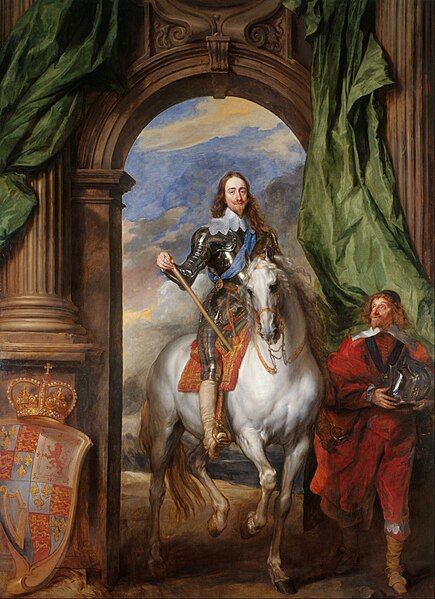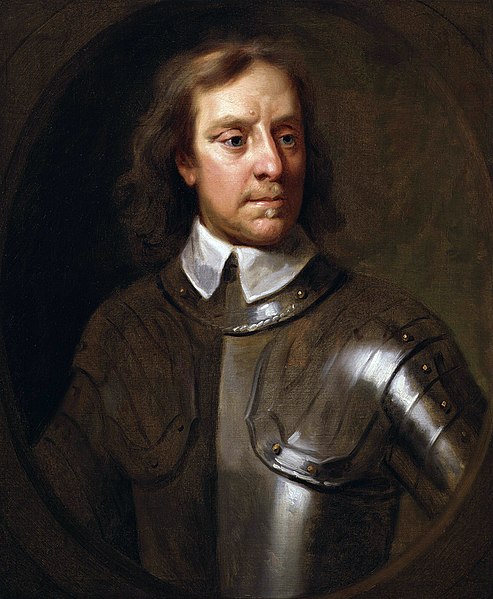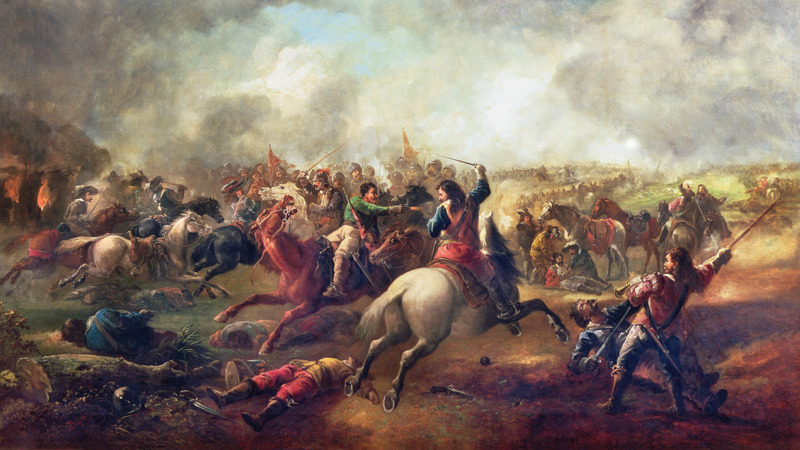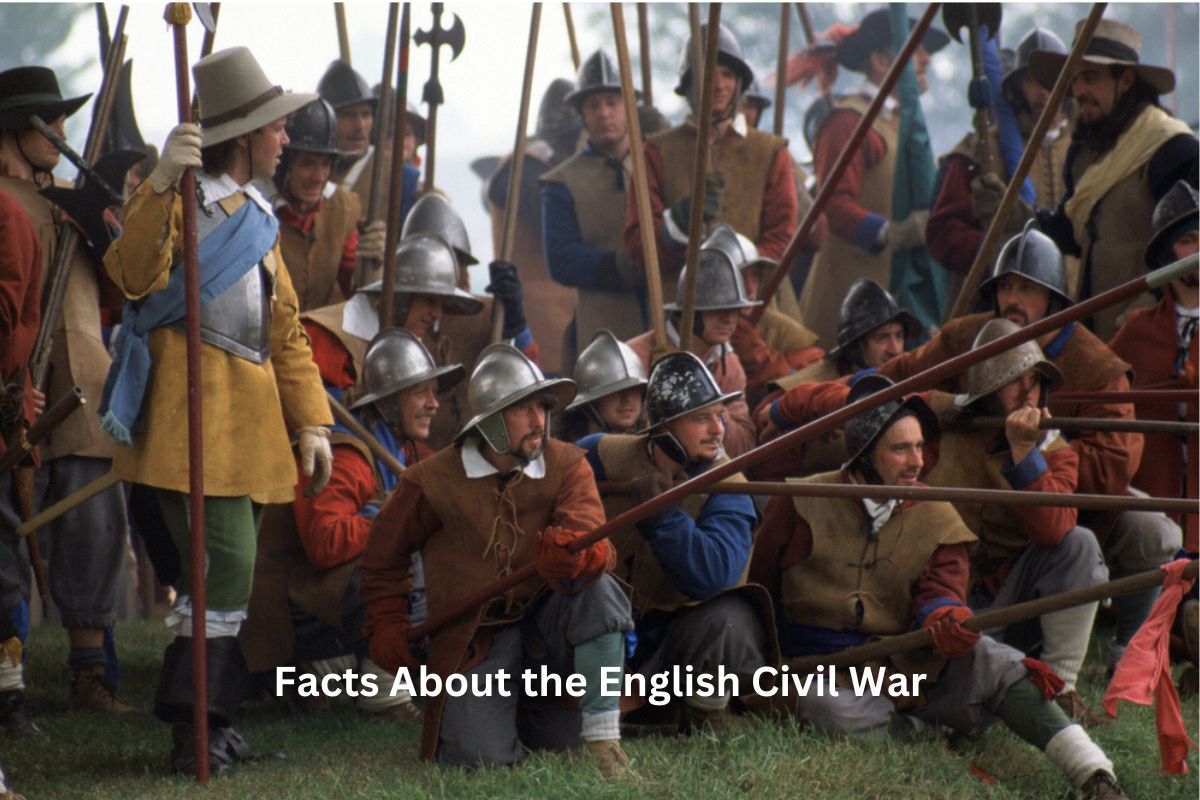The English Civil War, which raged from 1642 to 1651, was a pivotal period in English history characterized by political upheaval, religious tensions, and military conflicts.
This multifaceted and transformative event was marked by the clash between the Royalists, loyal to King Charles I, and the Parliamentarians, who sought to limit the monarchy’s power.
Over the course of the war, significant battles, political developments, and ideological movements emerged, ultimately leading to the execution of King Charles I, the establishment of the Commonwealth of England, and a lasting impact on the nation’s political and social structures.
This introduction sets the stage for a deeper exploration of the English Civil War and its complex historical significance.
English Civil War Facts
1. It occurred in the 17th century, primarily from 1642 to 1651
The English Civil War took place in the 17th century, specifically from 1642 to 1651.
It was a series of armed conflicts and political disputes that primarily unfolded in England, but it also had repercussions in Scotland and Ireland.
This period was marked by significant turmoil and upheaval within England’s political and social landscape.

2. Main factions: Royalists (supporting King Charles I) vs. Parliamentarians (Roundheads)
The primary conflict in the English Civil War was between two main factions:
- Royalists: The Royalists, also known as Cavaliers, were supporters of King Charles I. They tended to be more conservative and favored a strong monarchy with absolute power. Many Royalists were Anglicans and members of the nobility.
- Parliamentarians (Roundheads): The Parliamentarians, often referred to as Roundheads because of their short-cropped hair, were those who opposed King Charles I’s authority and sought to limit the power of the monarchy. They represented a mix of political and religious groups, including Puritans, Presbyterians, and other dissenting factions. They advocated for a more parliamentary system of government.
3. The first major battle was the Battle of Edgehill in 1642
The English Civil War officially began with the Battle of Edgehill on October 23, 1642. This battle, fought in Warwickshire, marked the first major military engagement of the conflict. It ended inconclusively, with neither side achieving a decisive victory.
Also Read: Charles I Accomplishments
Instead, it set the stage for a protracted and bitter struggle between the Royalists and Parliamentarians. The Battle of Edgehill demonstrated that the war would be a challenging and hard-fought campaign, with both sides deeply committed to their causes.
4. Oliver Cromwell led the Parliamentarians and created the New Model Army
In 1645, during the English Civil War, Parliament created the New Model Army. It was a professional and disciplined military force designed to replace the often untrained and unruly volunteer units that had previously made up the Parliamentarian forces. Sir Thomas Fairfax was initially appointed as its commander, with Oliver Cromwell as his second-in-command.

Oliver Cromwell emerged as a prominent figure in the New Model Army. He was a devout Puritan and a skilled military leader.
Also Read: Timeline of the English Civil War
Under Cromwell’s leadership, the New Model Army underwent rigorous training and adopted innovative tactics that made it highly effective on the battlefield. Cromwell’s military prowess and leadership abilities played a crucial role in the Parliamentarian cause’s success.
5. King Charles I was captured, tried, and executed in 1649
In 1648, King Charles I was captured by Parliamentarian forces. He was put on trial for high treason in January 1649, accused of waging war against his own people.
Despite efforts by some Parliamentarians to find a compromise, Charles I was found guilty and executed by beheading on January 30, 1649, in front of the Banqueting House in Whitehall, London.
His execution marked a profound and unprecedented moment in English history, as it was the first time a reigning monarch had been executed by his own subjects.
The execution of Charles I had far-reaching consequences. It effectively ended the possibility of a peaceful resolution to the conflict and intensified hostilities. It also led to the establishment of the Commonwealth of England, a republic led by Oliver Cromwell as Lord Protector.

6. England became a republic known as the Commonwealth during the Interregnum
The period between the execution of Charles I in 1649 and the restoration of the monarchy in 1660 is often referred to as the Interregnum. During this time, England was a republic, and the government was known as the Commonwealth of England.
Oliver Cromwell served as Lord Protector of the Commonwealth from 1653 until his death in 1658. As the de facto leader, Cromwell wielded significant power and authority, and the government was characterized by a degree of religious tolerance and stability.
The Interregnum was marked by both achievements and controversies. While it provided some degree of political and religious freedom, Cromwell’s rule was also characterized by authoritarian measures, including the dissolution of the Rump Parliament and the use of military force to suppress dissent.
7. Religious tensions played a significant role in the conflict
One of the key factors contributing to the English Civil War was religious tension. The Royalists were often Anglican, supporting the Church of England, which was the established state church.
In contrast, the Parliamentarians included a diverse range of dissenting religious groups, including Puritans, Presbyterians, and other nonconformists who sought religious reform.
Puritans, a prominent group among the Parliamentarians, advocated for a more austere and “purified” form of worship, rejecting what they saw as the excesses and rituals of the Anglican Church. This desire for religious reform and greater religious freedom played a significant role in their support for Parliament.
8. Negotiations for peace occurred during the Treaty of Newport but failed
In 1648, as the English Civil War raged on, peace negotiations were attempted at Newport, Wales. King Charles I, who was in captivity, saw an opportunity to negotiate favorable terms with Parliament. However, these negotiations ultimately failed.
The Treaty of Newport’s failure highlighted the deep-seated divisions and suspicions between the two sides. While there were efforts to reach a compromise, neither side was willing to make the necessary concessions, leading to the resumption of hostilities and further military campaigns.

9. The Battle of Marston Moor in 1644 was a decisive Parliamentarian victory
he Battle of Marston Moor, fought on July 2, 1644, in Yorkshire, was a pivotal moment in the English Civil War. It marked a decisive Parliamentarian victory and is often considered one of the turning points in the conflict.
The Parliamentarian forces at Marston Moor were led by Sir Thomas Fairfax and Oliver Cromwell, while the Royalist army was commanded by Prince Rupert. Cromwell’s cavalry played a crucial role in the Parliamentarian victory.
The defeat at Marston Moor weakened the Royalist cause in the north of England and allowed Parliamentarian forces to gain momentum in the war. It demonstrated the effectiveness of the New Model Army and the leadership of Cromwell.
10. Charles II, son of Charles I, attempted to regain the throne but failed
After the execution of his father, Charles I, in 1649, Charles II went into exile. He made several attempts to regain the English throne, including the Scottish invasion known as the “Third English Civil War” in 1650. However, his efforts were ultimately unsuccessful.
Charles II faced defeats in battles such as the Battle of Worcester in 1651. He famously escaped after the battle and went into hiding, eventually finding refuge in France.
Charles II’s inability to regain the throne during the English Civil War had a lasting impact on his rule when he was eventually restored as king in 1660. It led to a more cautious and pragmatic approach to governance, known as the “Restoration,” and the implementation of the Declaration of Breda, which promised religious tolerance and a general amnesty.
11. The Levellers, a political movement advocating for democratic reforms, emerged
The Levellers were a political movement that emerged during the English Civil War. They were a radical and reformist group that sought to advance democratic and egalitarian principles. The name “Levellers” referred to their goal of leveling social and political hierarchies.
The Levellers advocated for a range of democratic reforms, including universal suffrage (at least for male property owners), equality before the law, and the protection of civil liberties. They believed in the idea that all individuals should have a say in the government that governed them.
The ideas of the Levellers had a lasting impact on political thought and were influential in shaping the development of democratic ideals. Their writings and pamphlets, such as “The Agreement of the People,” laid out their vision for a more just and equitable society.
12. Some Leveller leaders were executed during Cromwell’s rule
While the Levellers shared some common goals with the Parliamentarians, they often clashed with Oliver Cromwell and his regime. The Levellers’ demands for more extensive political and religious reforms went beyond what Cromwell was willing to accept.
One of the most significant moments in the conflict between the Levellers and Cromwell’s leadership was the Putney Debates. In 1647, a series of debates took place among the New Model Army officers and representatives of the Levellers at Putney, London.
The debates centered on issues of political representation and the role of Parliament. Ultimately, no consensus was reached, and the Levellers’ demands for greater democracy were not fully realized.
Several prominent Leveller leaders, including John Lilburne and Richard Overton, were arrested and imprisoned during Cromwell’s rule. Some were even executed or subjected to harsh punishments for their radical ideas. This highlighted the challenges of achieving true democracy during a period of political upheaval and authoritarian rule.
13. The war ended with the restoration of the monarchy in 1660
The English Civil War ended with the restoration of the monarchy in 1660, when Charles II was crowned king, marking the conclusion of the Interregnum and the republic.
The Restoration period that followed saw a resurgence of the arts, including literature and theater, and a degree of religious tolerance, contrasting with the religious conflicts of the Civil War era.
The legacy of the English Civil War included the evolution of constitutional government, individual rights, and religious tolerance, which continued to shape the political landscape in England, leading to the Glorious Revolution of 1688 and the establishment of a constitutional monarchy.
